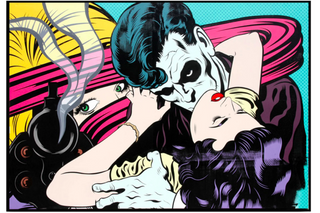In the forever instant society that we live in today, it’s no surprise people see what was once viewed as lifelong goals—to be an artist, singer, performer and so on—as quick decisions made on the previous successes of those before them. Careers don’t pop up overnight or in a small space of time anymore. That famous epigram says it all: Rome wasn’t built in a day. It takes time to mature your craft, and from what I’ve heard, the chase is just as fun—if not more so—than the goal.
One thing I really enjoy in interviews and speaking with friends, is hearing this process—the struggles, the lessons, and the moments that built you into the person you are today.
Someone who truly took the leap into the dark—before the craft he lives for was even seen as a successful career path to take, and then became a leading figure in a worldwide art movement—is bold British artist D*Face.
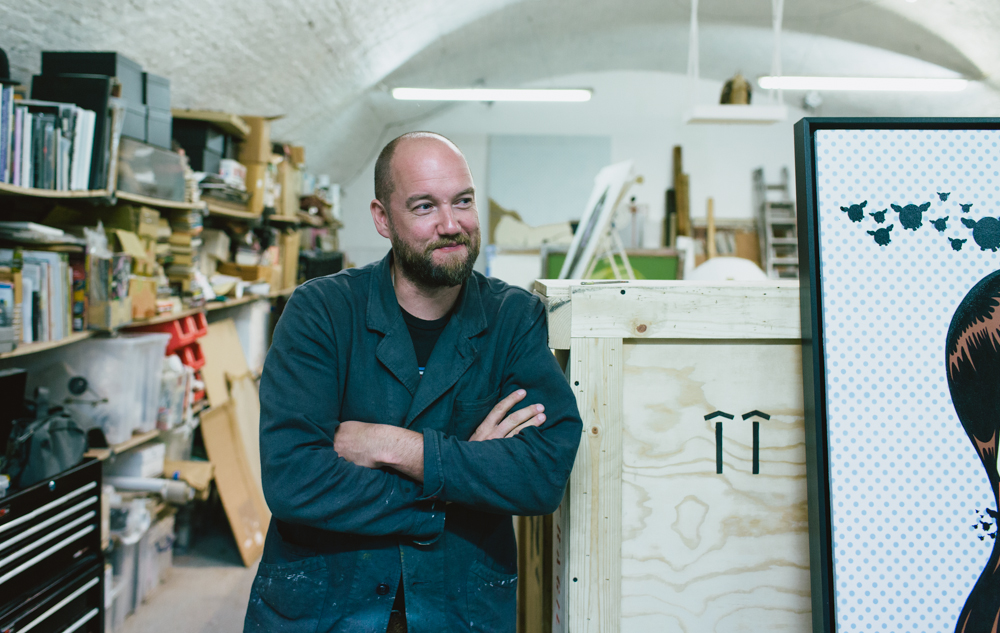
Here is a story that is definitely unique and fully deserves to be documented. Starting out as a skateboarder from South London fascinated with California culture, he dug his own path through graffiti, pop art, and propaganda, taking on the forefront of the street art movement with the likes of Banksy. The cobbled streets of London have shaped his view on how to present his work on the streets and in galleries, creating some truly memorable pieces with multimedia.
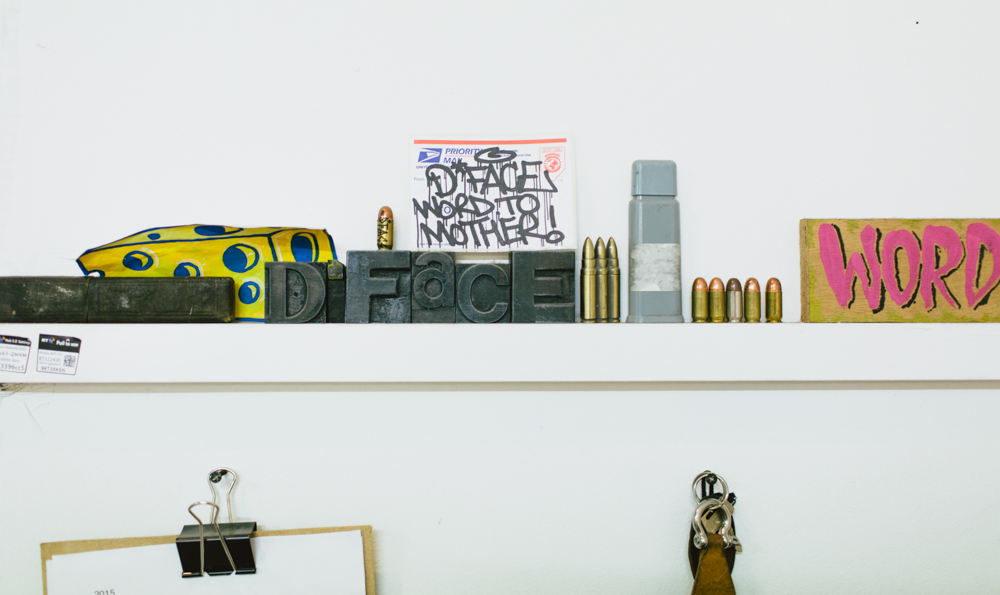
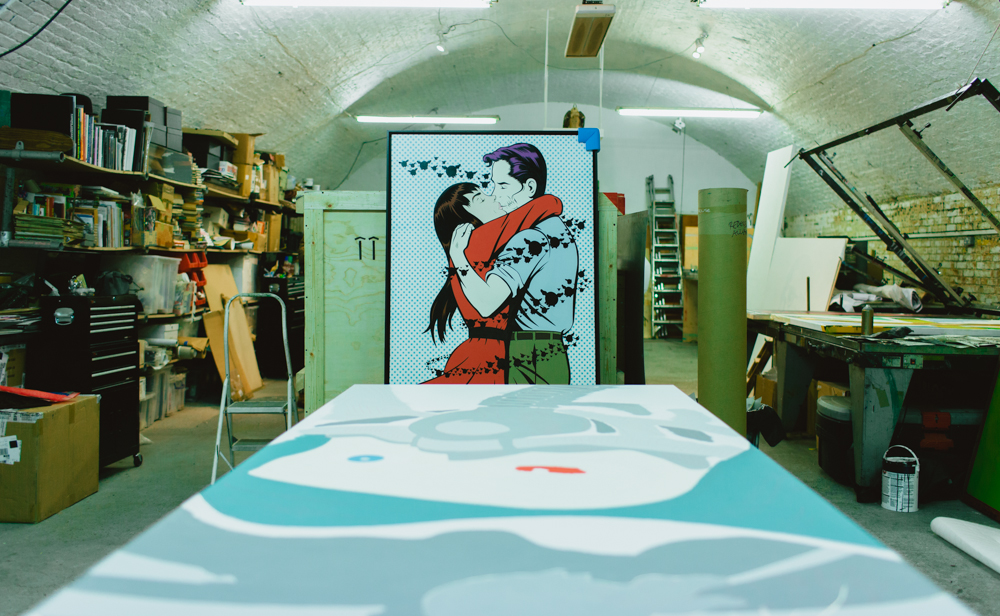
THE BEGINNING
BOYCE: Let’s start at the very beginning. What key things made you who you are today? How was growing up?
D*FACE: I reckon if I’m honest, it was having a sister that was really clever. I’ve thought about this, because I’ve realised I’m kind of weird. And what makes me different to my sister, who is super clever, and [has] gone down a very career-oriented path—is I’m like the opposite. And I think what it boils down to is that quite early on she was the golden child, the apple of my mum’s eye.
So when I realised I got more attention by not doing what I was told, something stuck. And I’m talking about a little kid at this point. I mean, I was a sweetheart, then it got to a point when I was like, “Ah, if I went against the grain, I would get attention.” And I don’t know why I needed it, but that’s what happened [laughs]. By default, the things I got into just so happened to be the things my mum disapproved of—like I got into skateboarding and she was like, “Skateboarding is for thick children.” She really saw it as this outcast thing back then, and I was like, “Cool! Because I really like it,” and it drove me into it even more.
“When I realized I got more attention by not doing what I was told, something stuck.”
We didn’t have any money. You know, my parents were hardworking people. My mum worked in the bank and my dad was a panel beater [an auto body mechanic], he was always working with his hands, making stuff we didn’t have the money to buy. It was like, “Dad, I want a walkie talkie,” so I got a block of wood with a nail in the top, painted khaki green, and that was it. Or one time he [taught] me how to make a rip saw out of a dog tin and a bit of string, and it was always this creative hands-on approach, this DIY mentality. So I guess those combinations of things have formed me into who I am today—with taking my own path, making my own amusements and doing things against the grain.
You grew up in South London right?
I grew up just near Wimbledon, so London was always on the doorstep. At a very early age, I traveled in to escape in town, skating as much as possible.
Although you grew up in London, your work is very California-driven, why?
I looked at Thrasher magazine when I was a kid and it was CALIFORNIA. That was everything I wanted to be. It was the ’80s skateboarding culture and the music scene that went with it, and there was me growing up in London where it felt we didn’t have any of that, and you start to try and find your way within that thing to be creative, skating as much as you can with the shit weather we get… But yeah, it was always about California for me, weirdly.
I definitely understand where you’re coming from with this; London was always painted to be a very dull-coloured, grayscale city in books and films. America was pretty much a total 360, especially LA, [which] was the pop art poster of the world.
Yeah, dude—I would look at that sun in pictures and it’s bright and all year round, everyone’s wearing fluoro and Vision Street Wear, Santa Cruz stuff… And you’re in London and you couldn’t get that gear. London has the cobbled streets, broken foot paths you couldn’t skate everywhere. In my head, in California, skateparks were on every corner, so that was always the holy grail. I looked at America through very rose-tinted spectacles thinking as a kid.
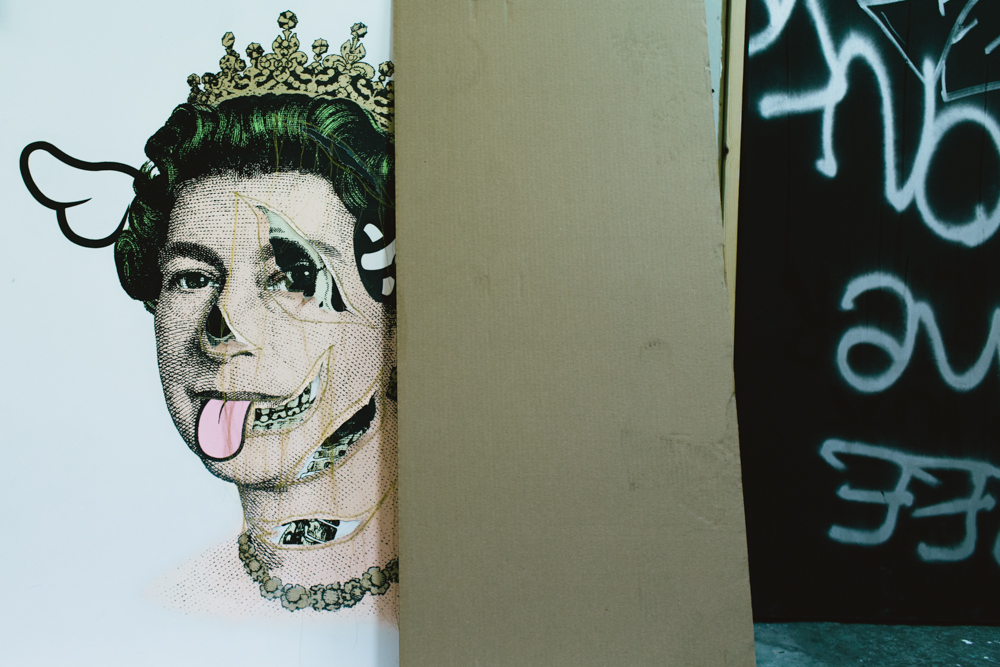
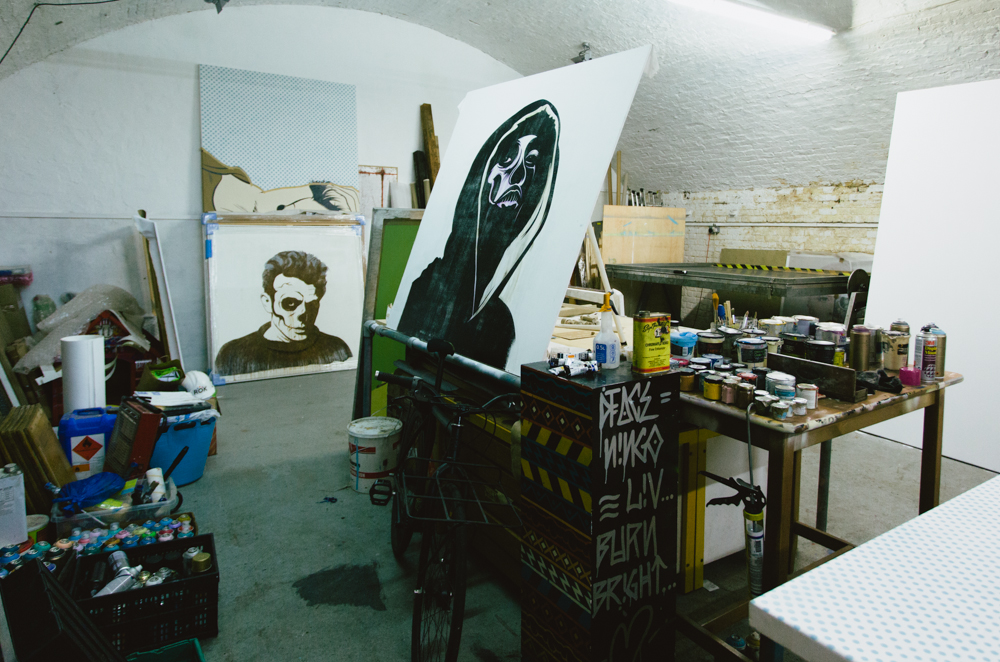
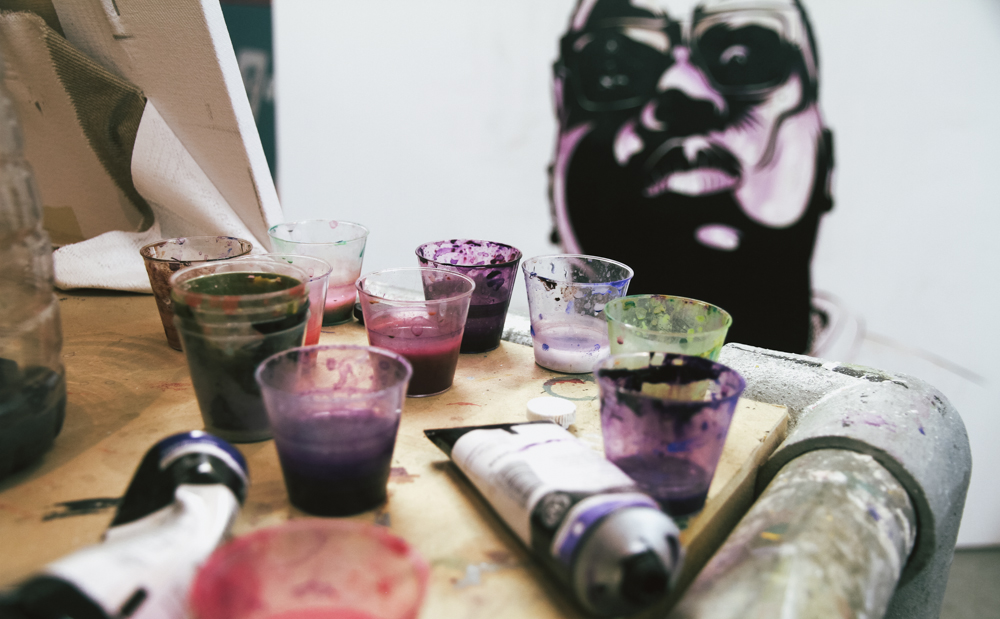
What about your art background?
I wasn’t very academic. I couldn’t stand being told what to do. So very naturally falling into art. But that for me was fascinating. Not so much the schooling I was getting, it was very traditional, like, paint this bowl of flowers. That bored the shit out of me and I wasn’t no good at it either. But what I was interested in was the graphics from skate magazines. I didn’t know who or how you got to do them. Actually in my naiveties, I thought you had to be a pro skater, then you got to make your own skate graphics. That was what inspired me: Skate graphics.
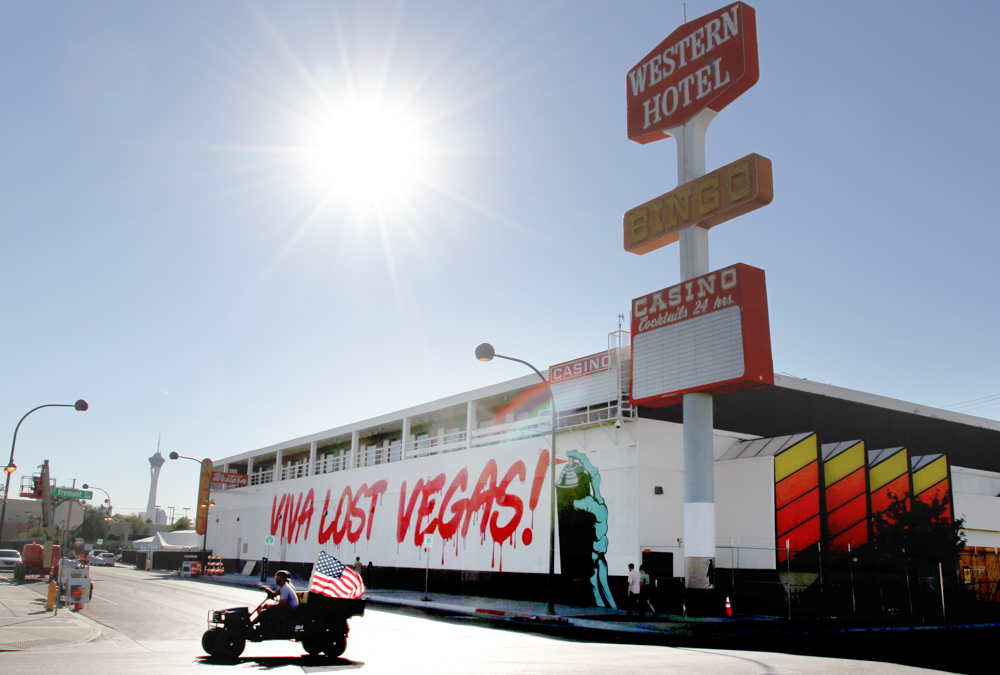
First time on the streets painting…
As a kid, skateboarding and graffiti went hand in hand because the spots you skated had graffiti and a lot of the track sides had graffiti on them, so you would get the train into the city and see it. The whole thing just fitted together. Some of the kids I skated with were older, so they influenced me. They were catching tags so I naturally followed, but mine weren’t very good, that was something I learnt very quickly, so I didn’t stick with it.
It wasn’t till much later till I came back to those things I was doing as a teenager, and I would see how exciting and interesting that time was all to me. But I wanted now to change how I was doing it, using the skills I had learnt and my new interests to build on a broader outlet for my work.
A lot of people didn’t appreciate tags, and as I wasn’t very good at them, I thought I would take a new angle—do something that wasn’t on the streets and change people’s perception of what graffiti was.
“[My dad] was always working with his hands, making stuff we didn’t have the money to buy.”
Is that when D*Face as we know started?
Yeah, that was late ’90s really. I started doing a character, merely because I thought it would be a cool thing to do. Because people can familiarise themselves with a character in whichever way they want to see. I don’t have to tell them what it is, they can just perceive it in their own rights. It was really just me fucking around with this character, through idle boredom. I then took to the city and placed these characters in all different spots, connecting routes around London and it became addictive. I want to do more, I want to go bigger.
It got real interesting when people started telling me their friend or whoever, saw this piece here in Hammersmith. It was real interesting to know it’s still there and that people were noticing them. Maybe I should do them bigger and more… it was just self-perpetuating. That was like late ’99, and I guess 2002 I kinda kicked in—started really painting bigger pieces and thinking over what I wanted to do.
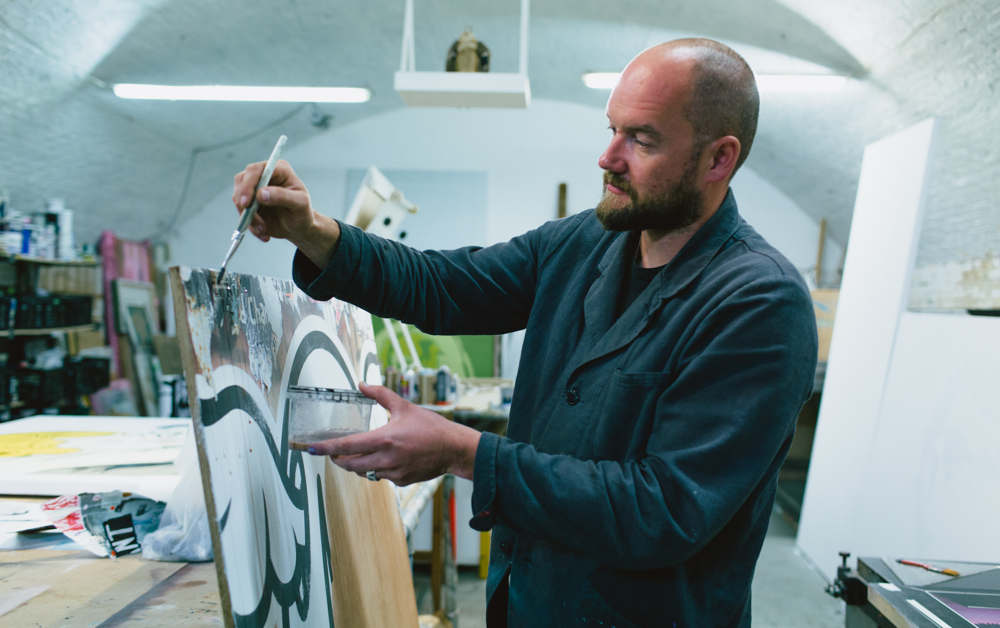
A lot of us who pursue our hobbies and want to turn them into a full-time thing have to run side jobs to fund it till it’s on its own feet. How were you funding your craft?
I had a job. I worked in design as an illustrator and hated it. It just wasn’t what I wanted to do… I thought it was. I did a course in animation and illustrator design and it was a really creative open course. It wasn’t like, “Here’s a brief come up with a logo”—it was like, “Here’s a word. Come up with a concept.” So everything I was doing was concept-based. I then went on to get a job from my grad show and very quickly realised, Fuck, this wasn’t what I thought I would be getting into, so this really fed my drive to do my own work outside of my job, and it took many years to get the courage to eventually say, I’m going to quit this job and concentrate on my own work full-time.
I still didn’t know what I was going to be, so it was a real leap of faith. Now, everyone knows there’s a thing called street art or whatever-the-fuck you want to call it. They know there’s artists making good money and lives on their work, so you could have that aspiration to be like, “That’s what I want to do.” But at the time, there wasn’t any of that, it just didn’t exist yet. All I could see is I could give it a go, or regret not giving it a go.
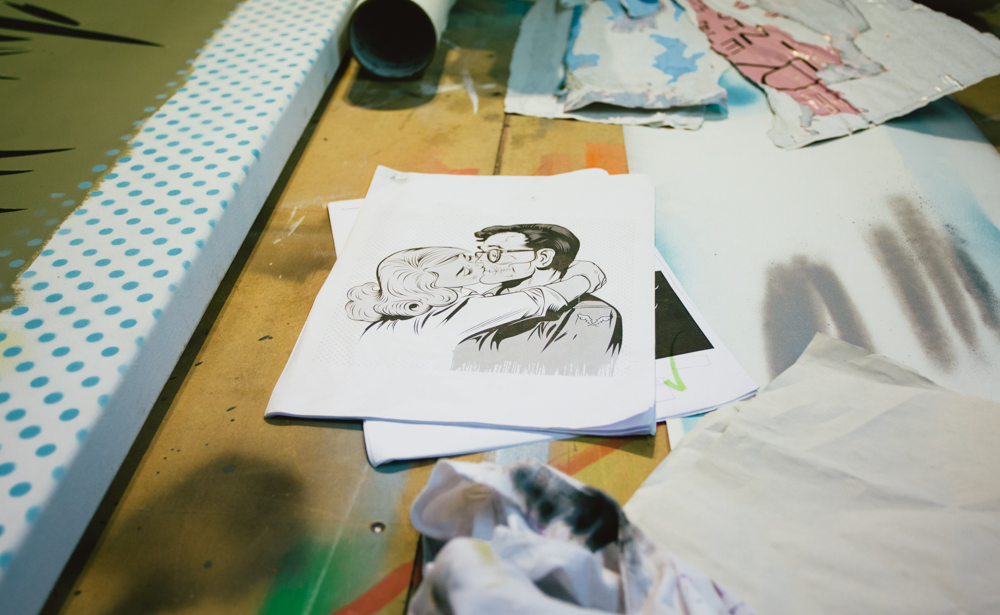
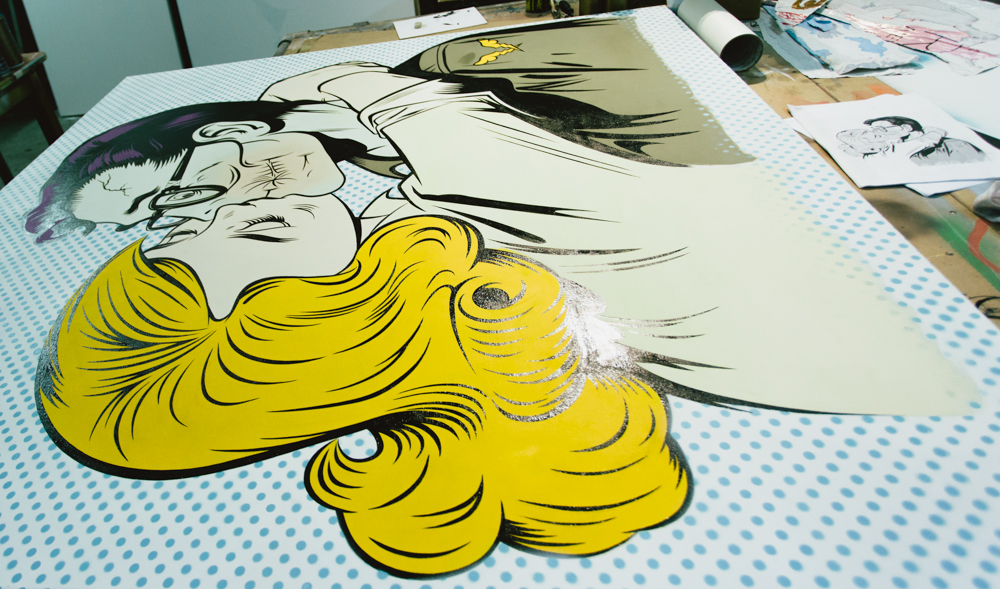
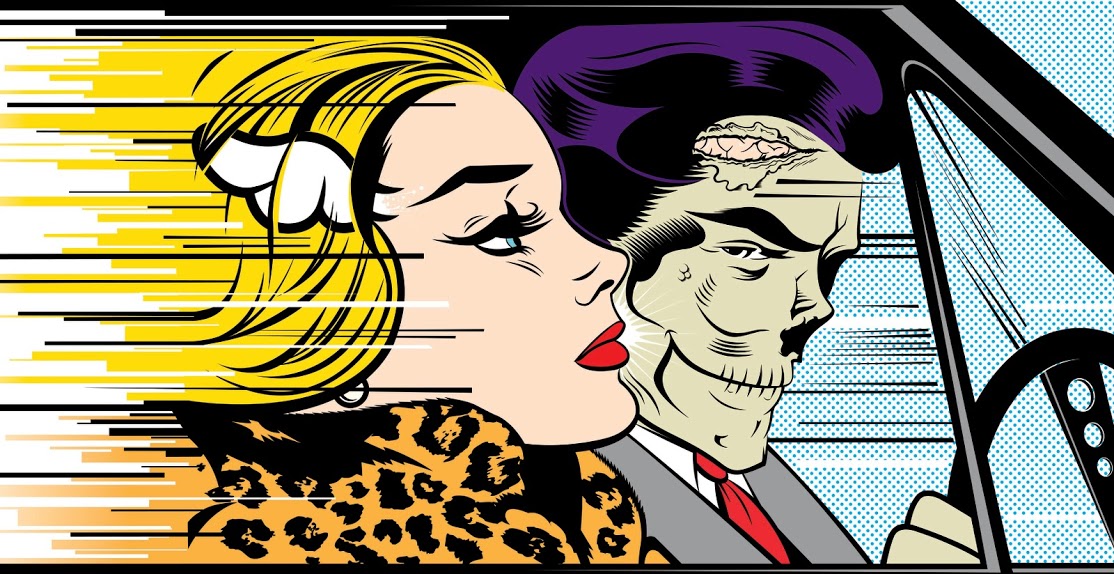
THE MIDDLE
After taking the leap, which piece of work got you out there and noticed?
I had done a few things that people had become aware off, and in the early days, you didn’t have to do much to have an impact as there wasn’t much out there. Coming ’round east in ’99, it was desolate. Nobody wanted to be here, so it was like a playground.
The thing that I think caught a lot of attention… I had a done a lot of painting and posters and I was thinking of other ways of amusing myself or getting my work to the public. I saw a program on forgery; these guys were forging 20 pound notes, and thought, Ah, that would be cool if I fucked with the money. I’m not gonna fake money, I’m going to use actual money and mess with the imagery on it, then spend it so someone gets it in their change. I liked to think about that reaction people where getting, So I started making these 20 pound notes and putting them into circulation, and that got picked up fairly quickly. I had a website quite early on, so I had them on there and that caught a lot of attention. People thought that was pretty cool, and not just in the street art community, but outside of that, in the art world.
“What felt like a few people doing something in the street then felt like a movement.”
That definitely changed things. It made people much more aware of my work, and also I noticed that when you put characters in the street, it interrupts with the space in a public environment and people would notice it a lot more, pushing them to question it and get curious, so that was working really well. But when taking my work to a group show I got invited to, it becomes art, and for me, I hadn’t defined how I could put my character into art. It was still a character from the streets put in a gallery. I felt a bit like a cheat, it ain’t working—the context has changed but the imagery hasn’t, and it didn’t have the same punch that it had in the street.
So the money was the start of me breaking down my character and seeing what I could do with it, and that was a moment of realisation that I didn’t have to just do a character—I could have one element of the character. It could be anything I fucking like because it’s me altering it, the artist altering that piece of art as my own work.
And it freed me from this graffiti mentality, because it has these rules even though it’s supposed to be ruleless. Theres a code of conduct where you have to do this, this, and this—it freed me from that. I could do whatever the fuck I liked, doesn’t matter. It’s my work, my art.
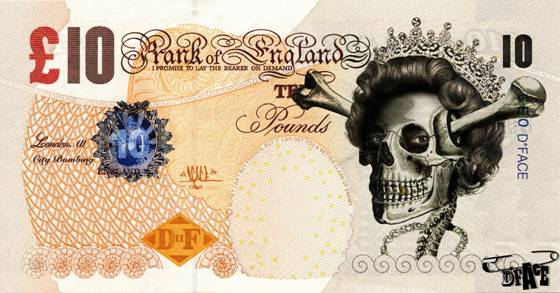
The money work propelled you forward in a new direction of being an artist. How did you follow that up?
Banksy got in touch and asked me to do a print for Pictures on Walls.
What was Pictures on Walls?
Pictures on Walls was Banksy‘s print shop. Very early on he figured out instead of selling a canvas for 5000 or 500 pound—as it would have been then—was really hard. But selling a 50 pound print was really easy, so he made 50 prints of the same piece and made the same amount of money.
So Banksy set Pictures on Walls as an outlet for his prints. He asked if I would do a collaboration with him and it sold really well. After our print, he asked me if I wanted to be represented by Pictures on Walls, if I wanted to be one of their artists, and to me it was really an aspiration—I liked his work, he was making a big name for himself, I was proud to be associated with him and the other artists that were on there.
“I want to disrupt and corrupt with my work.”
I then went down to their print studio, walked in, and was like, This is what I want. This is home for me and my type of people. He was very much, “Use the facilities, do what the fuck you like, this is what it’s about.” It felt like really being a part of something. What felt like a few people doing something in the street then felt like a movement. I felt really confident it was going to go somewhere and he had great aspirations. What he has become now doesn’t even need to be spoken about, it’s a told story.
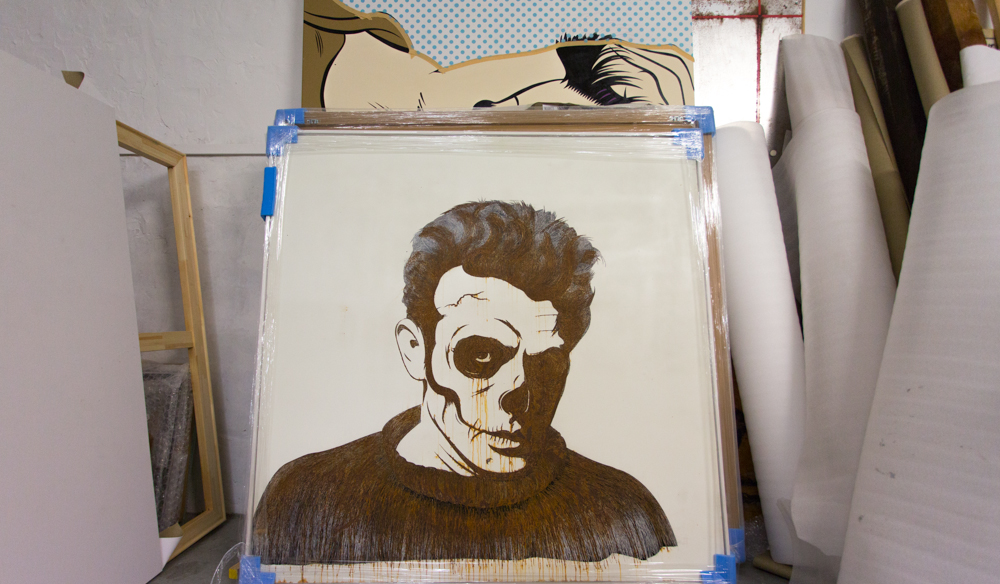
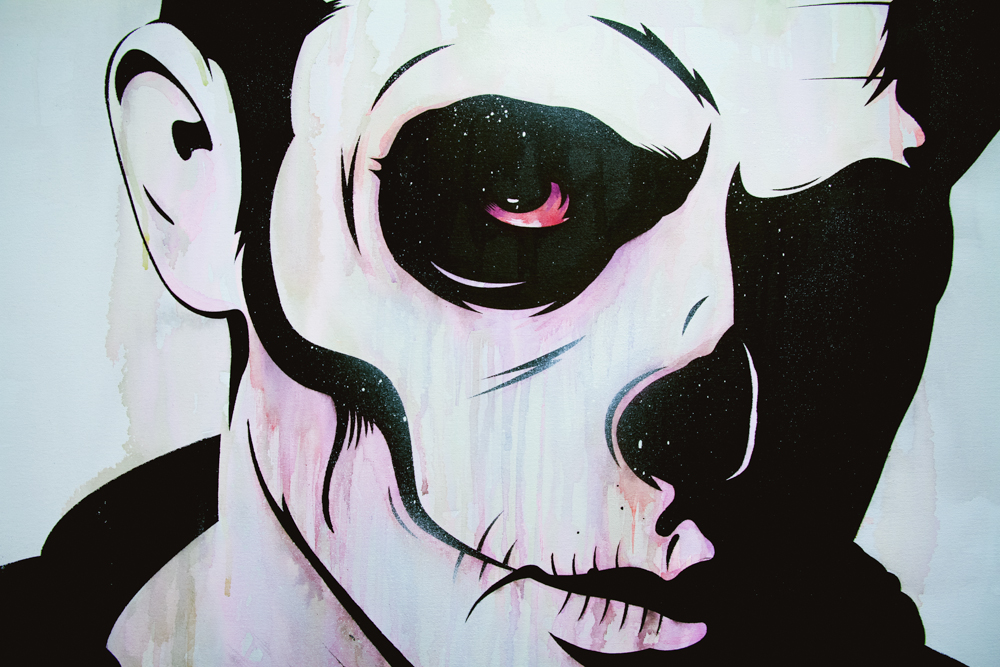
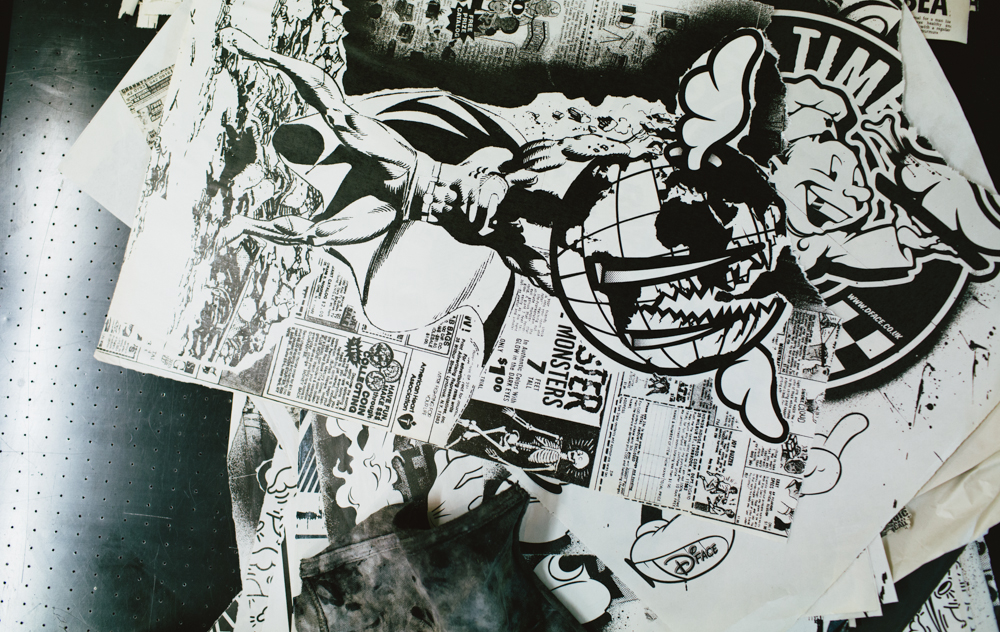
Your current work, do you have a message you’re trying to prevail?
Well, I call my work apopcalyptic, which is like a blend of pop art and inspiration, you know a graphic style which comes from that skateboard background. I always say I’m always looking for that perfect graphic or logo—you know that’s what gets me off. I get really excited when something works really simply… It’s almost less is more.
Fuck off, pigeon. [A pigeon walks into the studio]
Blended with the virility of life, that impending doom that death is ’round the corner by the one media or next, so I try articulate that that can be seen, if you look into it further. From the surface, it’s poppy, it’s graphic, nice colours or whatever—but theres a virility behind and that to me is what my work is about.
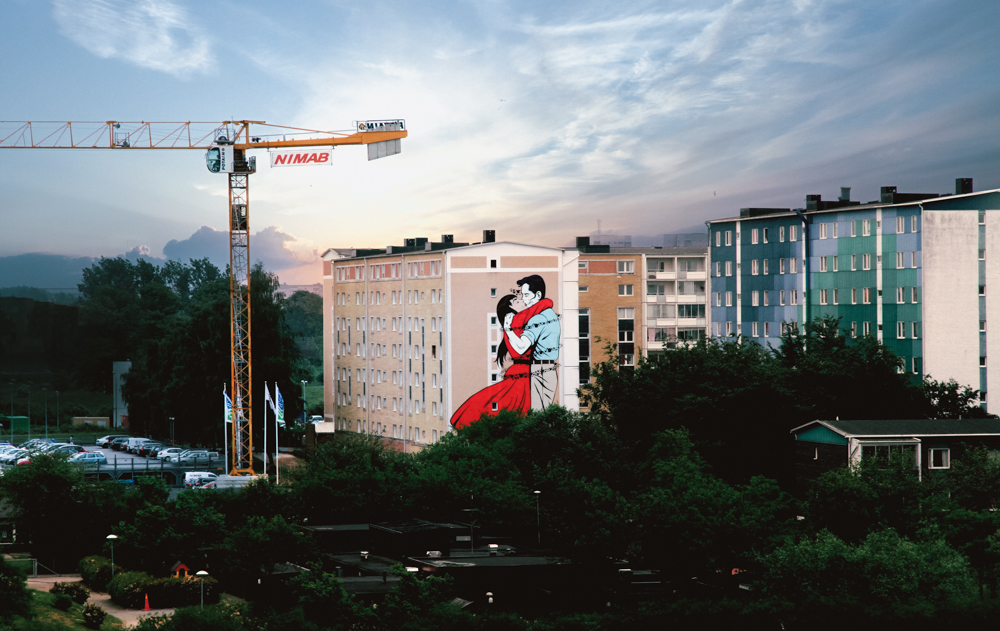
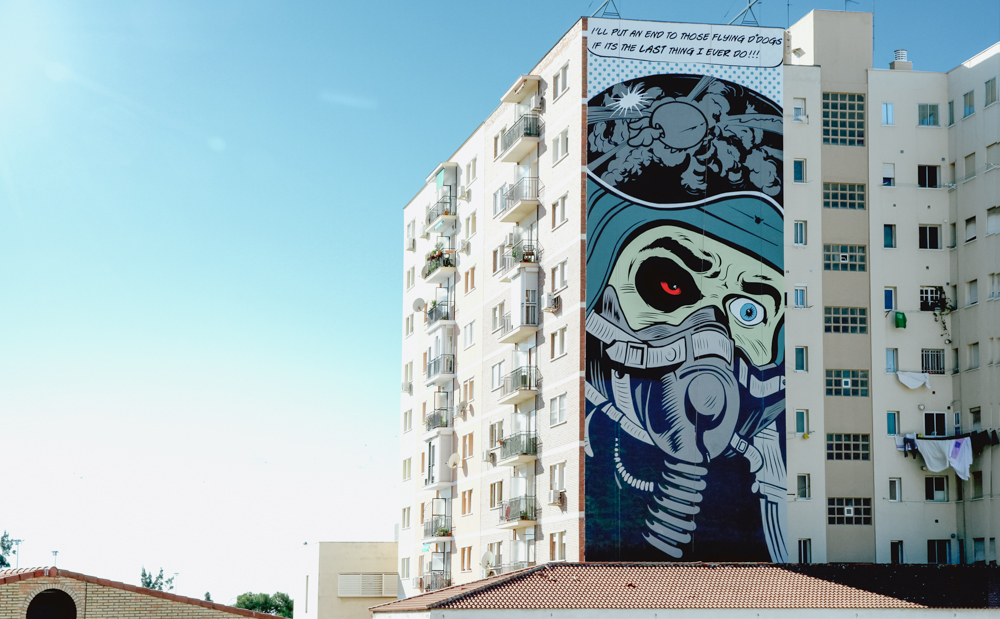
How do you come up with your concepts?
Just what excites me. I still try to work on having an element of shock that fucks with people. And I have gauged this of reactions of previous work, like when I killed the queen, I actually woke up one morning and it came up on the news it was coming up for her 80th birthday, and I was like, I’m going to do a dead queen, because people were thinking of her, but they were really thinking she’s getting old and she’s probably going to pop her clock soon. Anyway, I’m gonna kill her. And my wife was like, “You can’t do that! That would be outrageous!” Brilliant. Her reaction was spot on.
I want to disrupt and corrupt with my work.
Is this why you work with such a mix of mediums? Instead of just having work flat on a wall, you have sculptures and bits blowing up in your face.
Yeah, for me… See, as we was talking about that, you said blow up and I thought about the blown-up paintings I’ve done. I’ve never thought about making that three dimensional, [it would] be cool to do that. So, just having a conversation with you, [I] can take one word and it triggers an image in my head, for a new idea. That’s how it works for me. I’m not a good drawer—couldn’t sit here and draw you talking to me, it would be a stick piece—but it’s about ideas. Then I come back to them and build on them, so it’s concept-driven. Thats important to me.
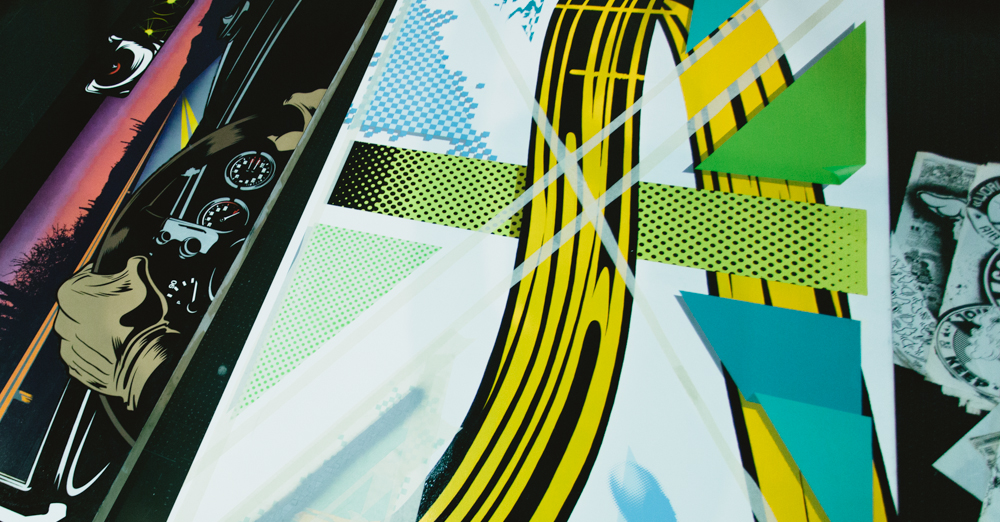
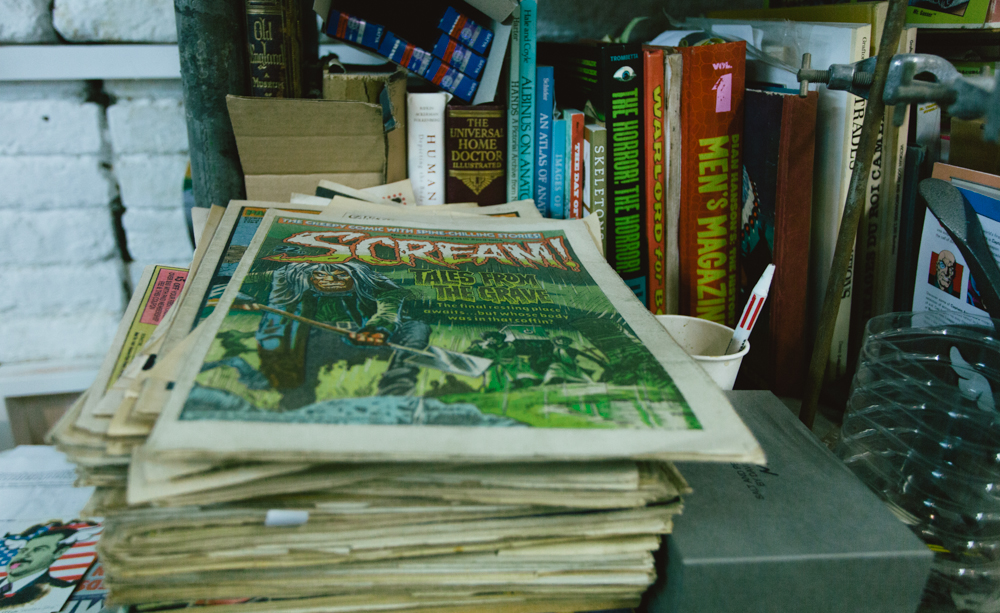
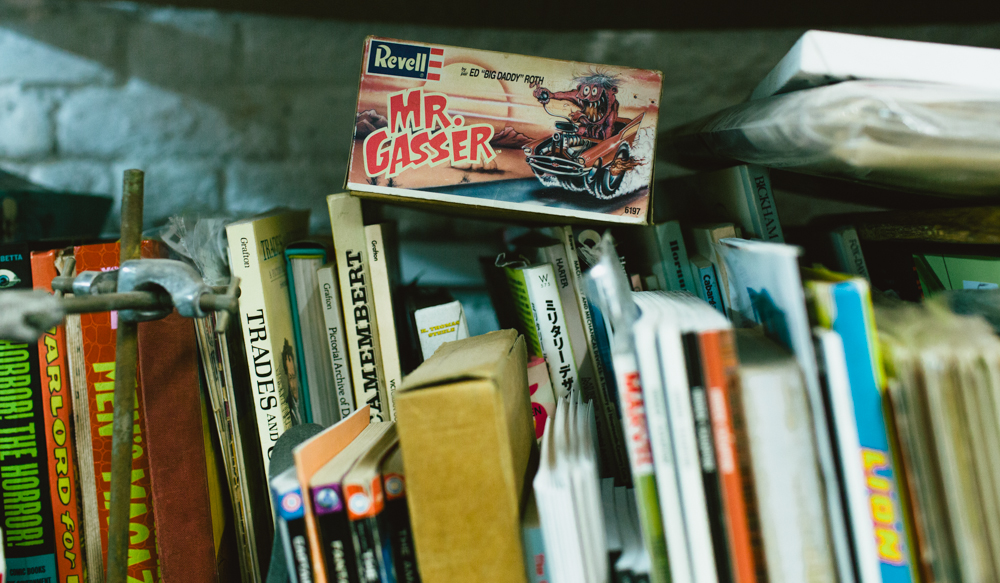
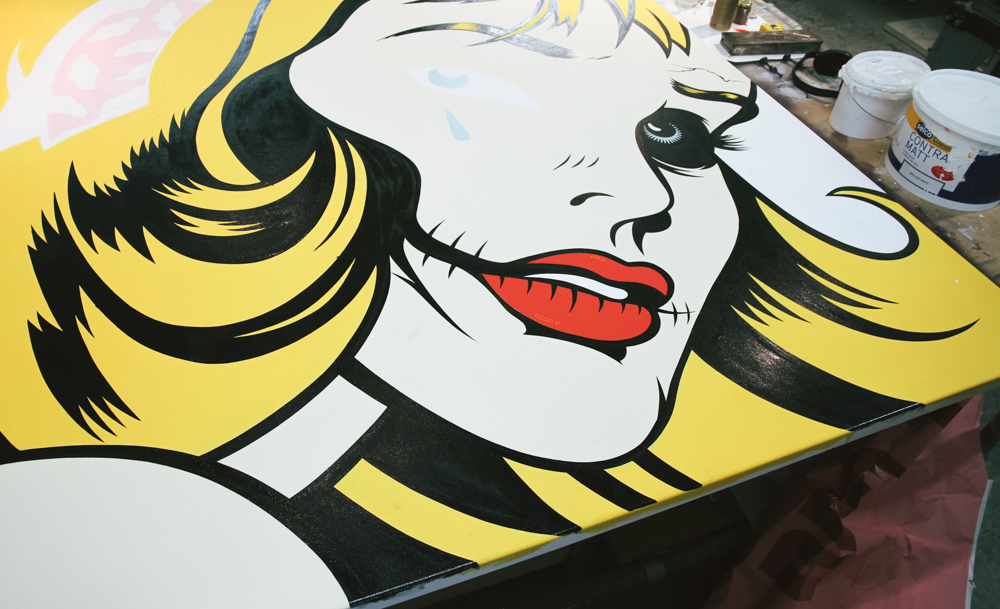
THE END
Your top tools?
Pen and paper first, for getting that idea down. A computer, you know Illustrator, love that. Screen printing, spray paint and enamel paint. Them things have become my methods of production.
Favourite London treasure?
I think Tower Bridge looking down, you can see the Gherkin, you know, you can see the Tower of London, et cetera. Loads of architecture reference points which go from today to decades ago. It’s amazing. There’s not many places in the world where you get that juxtaposition in architecture style like that. If it’s a nice sunset, it’s breathtaking. And that’s what makes London so great. It’s got the blend of all the right ingredients.
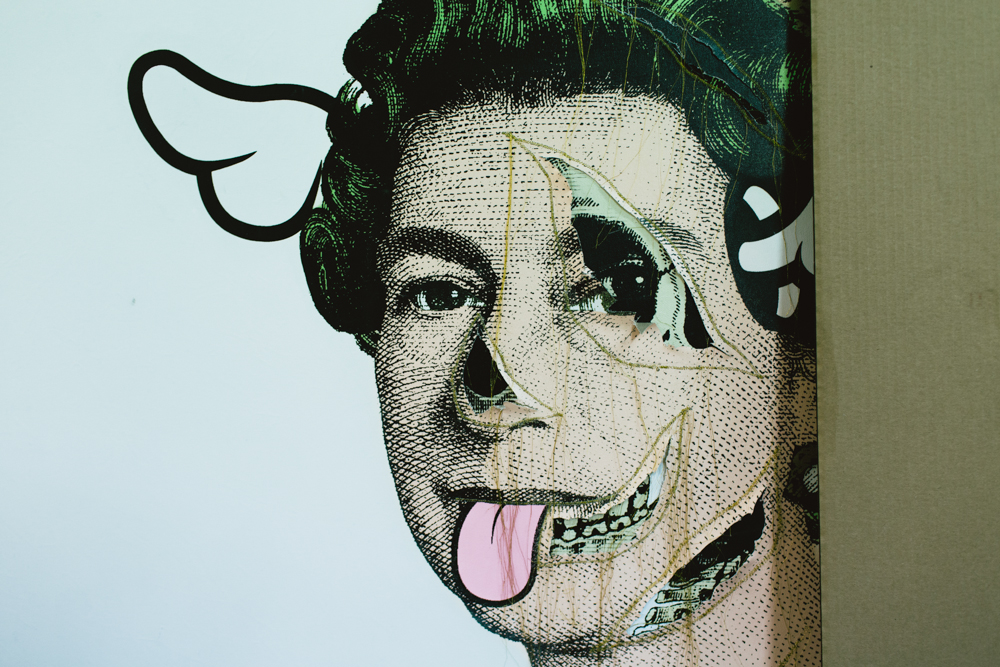
A quote that has stuck?
I like the quote, and have always tried to live by it: “Talk Minus Action Equals Zero.” I try living by that, my word is my bond.
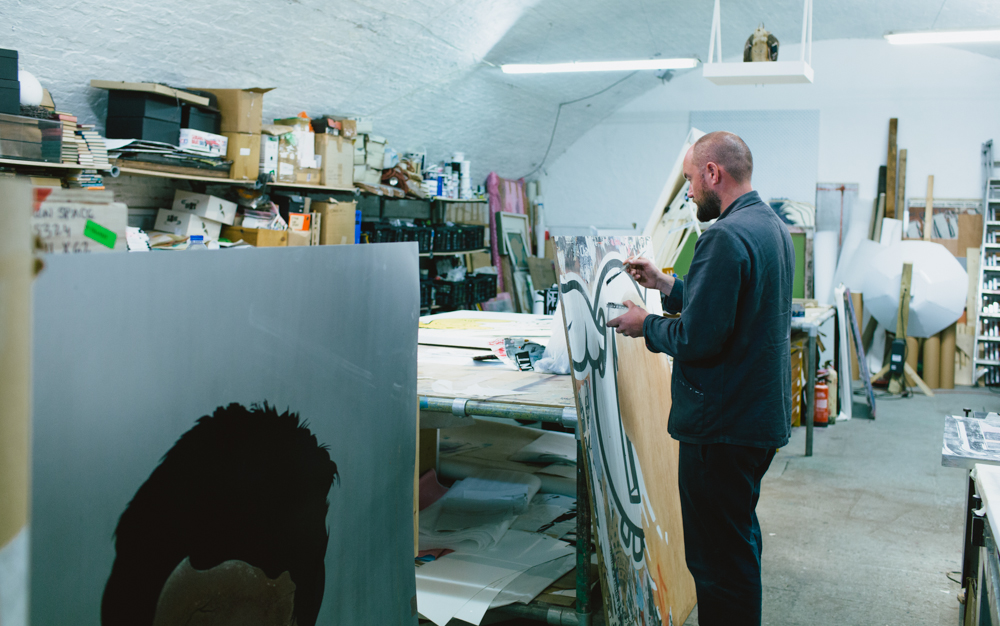
***
We ended talking for a long time, so this conversation was truly the just the tip of the iceberg of D*Face‘s story. You can find out more about his journey in his own words by grabbing yourself a copy of his book, available through his gallery store Stolen Space.
Thanks again D for taking the time to catch up, I hope this helps others as it has me—inspiring people to keep doing great things. If you want to follow D*Face’s adventure, you can via his Instagram & Twitter.
Toddle Pip

